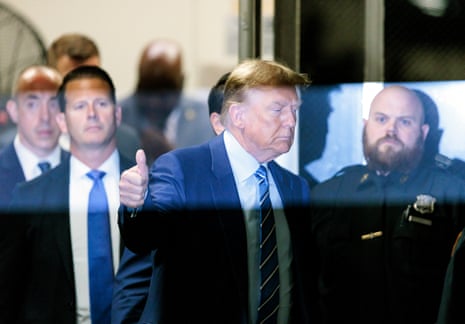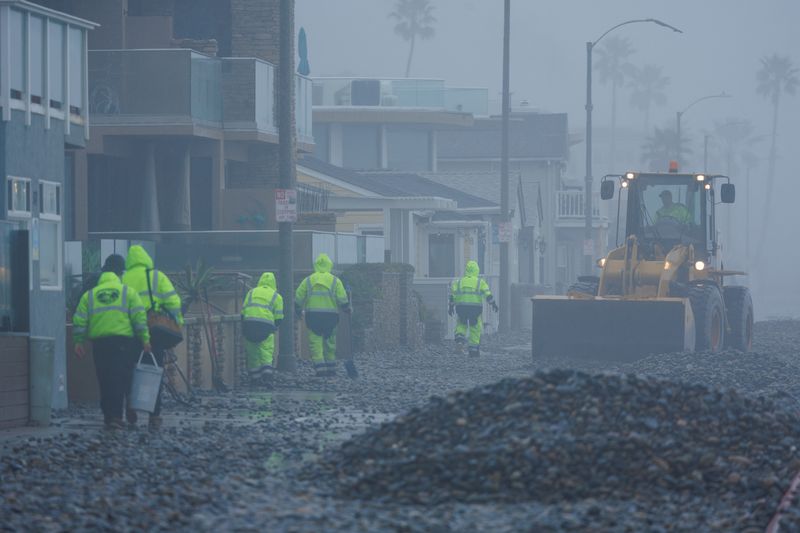President Donald Trump dealt his biggest blow to the renewable energy industry yet.
On Monday, Trump approved duties of as much as 30 percent on solar equipment made outside the U.S., a move that threatens to handicap a $28 billion industry that relies on parts made abroad for 80 percent of its supply.
The tariffs are the latest action by Trump to undermine the economics of renewables. The administration already decided to pull the U.S. out of the Paris Agreement on climate change, sought to roll back Obama-era regulations on power plant-emissions and signed sweeping tax reforms that constrained financing for solar and wind. The import taxes are the most targeted strike on the industry yet and may have larger consequences for the energy world.
“We are inclined to view it as posing greater trade risk for all types of energy, particularly if other nations establish new trade barriers against U.S. products,” Washington-based research firm ClearView Energy Partners LLC said Monday.
Solar Surges
U.S. panel maker First Solar Inc. jumped as much as 9 percent to $75.20 in after-hours trading in New York. The Tempe, Arizona-based manufacturer stands to gain as costs for competing, foreign panels rise.
Just the threat of tariffs shook solar developers in recent months, with some hoarding panels and others stalling projects in anticipation of higher costs. The Solar Energy Industries Association projected 23,000 job losses this year in a sector that employed 260,000.
Trump approved four years of tariffs that start at 30 percent in the first year and gradually drop to 15 percent. The first 2.5 gigawatts of imported solar cells are exempt for each year.
The duties are lower than the 35 percent rate the U.S. International Trade Commission recommended in October after finding that imported panels were harming American manufacturers. The idea behind the tariffs is to raise the costs of cheap imports, particularly from Asia, and level the playing field for those who manufacture the parts domestically.
“This is not a goodbye for renewable energy in the U.S.,” Fatih Birol, executive director of the International Energy Agency, said at the World Economic Forum in Davos, Switzerland. “I don’t believe this decision will reverse the solar expansion in the U.S. The global solar industry will adjust. The penetration of solar in the U.S. will continue.”
First Solar is the largest of a handful of panel makers left in the U.S. after most of the industry migrated to China in the past decade. That means the major impact of the duties will be on panel installers, which get most of their supplies from Chinese companies.
Read More: Why Trump Is Taxing Solar Panels Imported by U.S.: QuickTake Q&A
Despite higher anticipated costs, American solar installers including Vivint Solar Inc. and Sunrun Inc. jumped in after-hours trading. “A 30 percent tariff in Year One is bad,” said Gordon Johnson, a New York-based analyst at the Vertical Group, but “it’s less than what the consensus was.”
Jigar Shah, co-founder of investor Generate Capital Inc. and an outspoken advocate for the solar industry, went as far as to describe the decision as “good news.” The tariffs are “exactly what the solar industry asked for behind closed doors” to prevent a negative impact on companies, he said.
Not Deterred
The duties won’t be entirely devastating for the U.S. solar industry, said Hugh Bromley, a New York-based analyst at Bloomberg New Energy Finance. He estimated they’ll increase costs for large solar farms by less than 10 percent and for residential systems by about 3 percent.
The decision will “destruct some demand for new projects in the next two years,” Bromley said. “But they will likely prove insufficient in magnitude and duration to attract many new factories.”
For Trump, the tariffs represent a step toward making good on a campaign promise to get tough on the country that produces the most panels — China. Trump’s trade issues took a backseat in 2017 while the White House focused on tax reform, but it’s now coming back into the fore: The solar dispute is among several potential trade decisions that also involve washing machines, consumer electronics and steel.
Solar Threatened
Tariffs may curb U.S. solar investments that have already fallen in recent years
Source: Bloomberg New Energy Finance
The decision comes almost nine months after Suniva Inc., a bankrupt U.S. module manufacturer with a Chinese majority owner, sought import duties on solar cells and panels. It asserted that it had suffered “serious injury” from a flood of cheap panels produced in Asia. A month later, the U.S. unit of German manufacturer SolarWorld AG signed on as a co-petitioner, adding heft to Suniva’s cause.
Suniva had sought import duties of 32 cents a watt for solar panels produced outside the U.S. and a floor price of 74 cents a watt. Trump’s tariffs translate to a charge of about 10 cents a watt, according to Bromley.
Read More: U.S. Solar Has a $1.5 Billion, Long-Shot Plan to End a Trade War
Shunfeng International Clean Energy Ltd., Suniva’s parent, was up 3.9 percent in Hong Kong after jumping as much as 5.2 percent earlier.
While Trump has broad authority on the size, scope and duration of duties, the dispute may shift to a different venue. China and neighbors including South Korea may opt to challenge the decision at the World Trade Organization — which has rebuffed prior U.S.-imposed tariffs.
Here’s what people are saying about the tariffs:
- Suniva thanked Trump for “holding China and its proxies accountable” and said it looked forward to global settlement negotiations. Trump said in his statement that the U.S. Trade Representative will discuss resolving a separate trade dispute that resulted in duties imposed on Chinese solar products and U.S. polysilicon.
- SolarWorld said it “appreciates the hard work of” Trump and is “hopeful” the tariffs will be enough to rebuild solar manufacturing in the U.S.
- Sunrun said that while the decision lifts “a cloud of uncertainty,” it runs counter to “consumers, bipartisan elected officials, many military personnel, and the 99 percent of American solar workers whom this tariff will harm in the coming years.” It called for the administration to clarify which countries won’t be subject to the tariffs. (The U.S. Trade Representative said Mexico and Canada will be subject to the duties, despite previous reports that they may be spared.)
- Rooftop solar installer Sunnova Energy Corp. said the tariffs will not deter the industry. Vivint said it was “disappointed” but would continue to “provide consumers with a better way to create energy.”
- China’s JinkoSolar Holding Co. said the tariffs were “better than expected” and that it wouldn’t eliminate the possibility of building a plant in the U.S. Taiwan’s Neo Solar Power Corp. similarly said it would study the feasibility of establishing assembly lines in the U.S.
- South Korea’s Hanwha Q Cells Co. plans to diversify sales to avoid the U.S. tariffs and look for other markets
- Regardless of the tariffs, solar installer Tesla Inc. said it’s “committed to expanding its domestic manufacturing,” citing a “gigafactory” it opened in Buffalo, New York.
- Bill Waren, senior trade analyst at Friends of the Earth, called the decision “recklessly irresponsible and a thinly veiled attack on clean energy.”
- ClearView Energy Partners LLC estimated a roughly 6 percent increase in the costs of commercial solar projects and a 4 percent rise in residential rooftop solar expenses. Large, utility-scale projects may bear the brunt, with a 10 percent increase.
- The Solar Energy Industries Association warned the tariffs will delay or kill billions of dollars of solar investments.
Read more: http://www.bloomberg.com/





